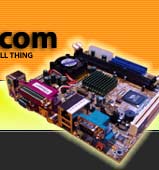|  | September 05, 2017
Choosing the right DC-DC PSU August 27, 2015
AMD's Project Quantum August 13, 2015
The Redstone PC is the ultimate Mini-ITX Minecraft Machine October 09, 2014
The "Restomod TV" April 09, 2013
Installing NAS4Free February 28, 2013
Building an XBMC 12 Home Theatre PC January 25, 2011
XBMC Guide updated to version 10.0 August 06, 2010
Building a Green PC February 15, 2010
Building an ION powered HTPC with XBMC October 10, 2008
The "Cambridge Autonomous Underwater Vehicle 2008" |
|  | | | September 12, 2008
"Florian", the DVD burning robot September 05, 2008
The "i-EPIA" May 22, 2008
The "GTA-PC" April 14, 2007
The "Digg" Case January 19, 2007
The "ITX-Laptop" December 07, 2006
The "Tortoise Beetle" October 02, 2006
The "DOS Head Unit" August 31, 2006
The "Janus Project" August 05, 2006
The "Leela PC" June 26, 2006
Nano-ITX in a Football May 17, 2006
The "EPIA Alloy Mod" April 11, 2006
Neatorama's Collection of Case Mods February 18, 2006
The "Rundfunker" October 24, 2005
The "ITX TV" October 06, 2005
The K'nex-ITX August 05, 2005
The "Waffle Iron PC" July 21, 2005
The "Supra-Server" July 18, 2005
The "Mega-ITX" July 07, 2005
The "Encyclomedia" May 25, 2005
The "Accordion ITX" |
|  | | | May 16, 2005
The "FileServerRouterSwitch" May 15, 2005
The "Mini Falcon" May 13, 2005
The "Bender PC" May 11, 2005
The "BBC ITX B" May 10, 2005
The "Frame" April 20, 2005
The "Jeannie" March 09, 2005
The "Cool Cube" January 30, 2005
First Nano-ITX Project? January 17, 2005
The "iGrill" January 15, 2005
The "Gumball PC" December 15, 2004
The "Deco Box" December 03, 2004
The "TERA-ITX" October 06, 2004
The "Coealacanth-PC" September 17, 2004
The "Gramaphone-ITX-HD" August 26, 2004
The "C1541 Disk Drive ITX" August 25, 2004
The "SEGA-ITX" August 13, 2004
The "Quiet Cubid" August 06, 2004
The "BMWPC" July 14, 2004
The "Moo Cow Moo" July 02, 2004
The "Mini Mesh Box" Full alphabetical archive on right hand side of page... |
|
|
EPIA MII 12000 Review
The Nehemiah C3 CPU
Nehemiah is the latest generation C3 CPU, and features a number of improvements over the Ezra-T C3 used in all previous EPIAs. It has 20.5 million transistors, and uses a 0.13 micron process. For comparison, a Barton Athlon or Northwood Pentium 4 have about 55 million transistors, and recent GPUs have over 100 million transistors.
The Nehemiah is designed to work at clock speeds of 1GHz and beyond - the Ezra-T is designed at up to about 1GHz.
Nehemiah has a die size of 52mm2 - the world's smallest x86 processor. It has been designed to minimize power consumption and optimise heat dissipation - VIA call this "Coolstream". Some active cooling is still required, but not very much. Let's hope for a Nehemiah Eden C3 version.
The Nehemiah features SSE instructions instead of the 3DNow! instructions featured on previous C3s. This should bring enhanced performance in 3D applications, which are optimised for more modern SIMD instruction sets. SSE optimised image processing applications should also benefit.
Full Speed FPU - the Nehemiah has a full speed floating point unit for the first time. The Ezra-T has a half-speed FPU. Floating point calculations are used heavily in 3D rendering, multimedia, and streaming applications.
Enhanced 64KB Full-Speed Exclusive L2 cache with 16-way associativity. An exclusive L2 cache gives a larger effective total cache size as it doesn't replicate the contents of the L1 cache. The more cache available, the more chance there is that program loops can run in cache and not comparatively slow main memory.
StepAhead Advanced Branch Prediction - Looks ahead and gathers the data needed to optimally run applications
A hardware based random number generator (RNG) has been added. This creates true random numbers from the random electrical noise on the chip. This is of much use in security applications, allowing a strong cryptographic key to be generated. VIA call this the "PadLock Data Encryption Engine".
VIA's PadLock Hardware Security Suite on the C5P die
In addition, the EPIA MII 12000 features VIA's PadLock Advanced Cryptography Engine, which adds hardware based AES encryption to an updated Nehemiah C5P core. We'll take a look at this later.
The Apollo CLE266 Chipset and Supporting Chips -->
|
|







